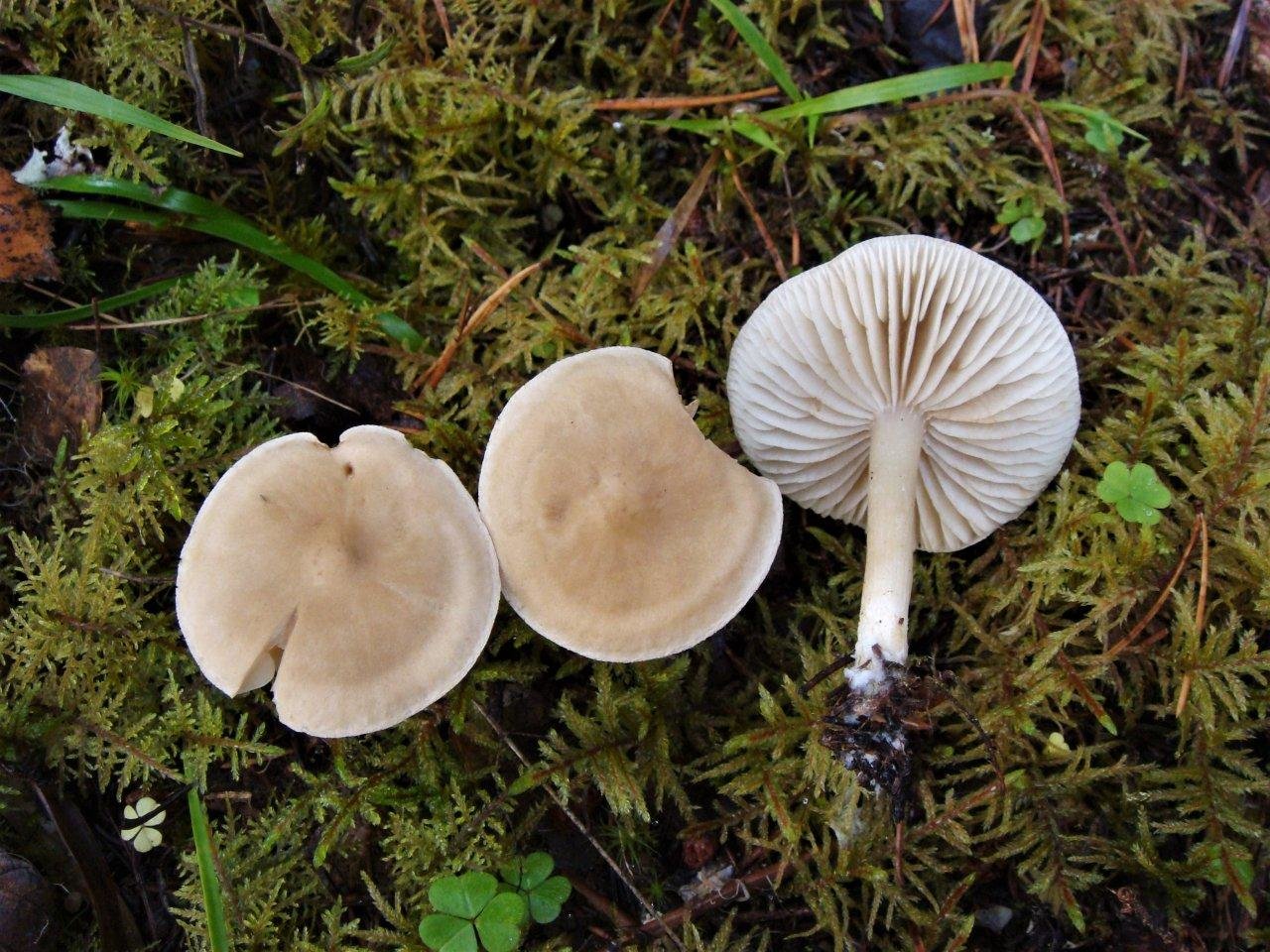Stinky Row (Tricholoma Inamoenum)
- Division: Basidiomycota (Basidiomycetes)
- Subdivision: Agaricomycotina (Agaricomycetes)
- Class: Agaricomycetes (Agaricomycetes)
- Subclass: Agaricomycetidae (Agaricomycetes)
- Order: Agaricales (Agaric or Lamellar)
- Family: Tricholomataceae (Tricholomovye or Ryadovkovye)
- Genus: Tricholoma (Tricholoma or Ryadovka)
- Type: Tricholoma Inamoenum (Smelly Row)
- Unpleasant agaricus
- Gyrophila inamoenum

head diameter 1.5 – 6 cm (sometimes up to 8 cm); at first it has a shape from bell-shaped to hemispherical, but straightens out with age and becomes broadly convex, flat or even slightly concave. There may be a small bump in the center, but this is not necessary. The surface of the cap is smooth, dry, matte, slightly velvety; dull, at first whitish or cream, later it darkens and becomes from honey or pinkish-dark beige to pale ocher, the color of natural suede, while the shade in the center of the cap is more saturated than at the edges.
Records adnate or notched, often with a descending tooth, rather thick, soft, rather broad, rather sparse, whitish or pale yellowish.
spore powder white.
Споры elliptical, 8-11 x 6-7.5 microns
Leg 5-12 cm long and 3-13 mm thick (sometimes up to 18 mm), cylindrical or expanded at the base; with a smooth, fine-fibrous or “powdered” surface; from white to cream or pale yellowish.
Pulp thin, white, with a strong unpleasant smell of tar or lighting gas (similar to the smell of a sulfur-yellow row). The taste is initially mild, but then unpleasant, from slightly rancid to pronouncedly bitter.
The stinky rowweed forms mycorrhiza with spruce (Picea genus) and fir (Abies genus). Usually it is confined to moist forests with a developed thick moss cover on the soil, but it can also be found in blueberry coniferous forests. It prefers slightly acidic to calcareous soils. This is a fairly common species in Scandinavia and Finland, as well as in the zone of spruce-fir forests of Central Europe and the Alps. On the plains of northwestern Europe, both in places of natural spruce growth and in artificial plantations, it is extremely rare or absent altogether. In addition, stinky rowweed has been recorded in North America, possibly making it a species of the entire northern temperate zone.
Tricholoma lascivum has an unpleasantly sweetish smell at first, later chemical, similar to the smell of lighting gas, and a very bitter taste. This species is associated strictly with beech.
Row white Tricholoma album forms mycorrhiza with oak.
The common-lamella row Tricholoma stiparophyllum forms mycorrhiza with birch and is found both in deciduous forests and in mixed (including spruce forests mixed with birch), it is distinguished by a burning taste, a rare smell and frequent plates.
The mushroom is inedible due to its disgusting smell and bitter taste.
The stinky row in some sources belongs to the category of hallucinogenic mushrooms; when eaten, it can cause visual and auditory hallucinations.









